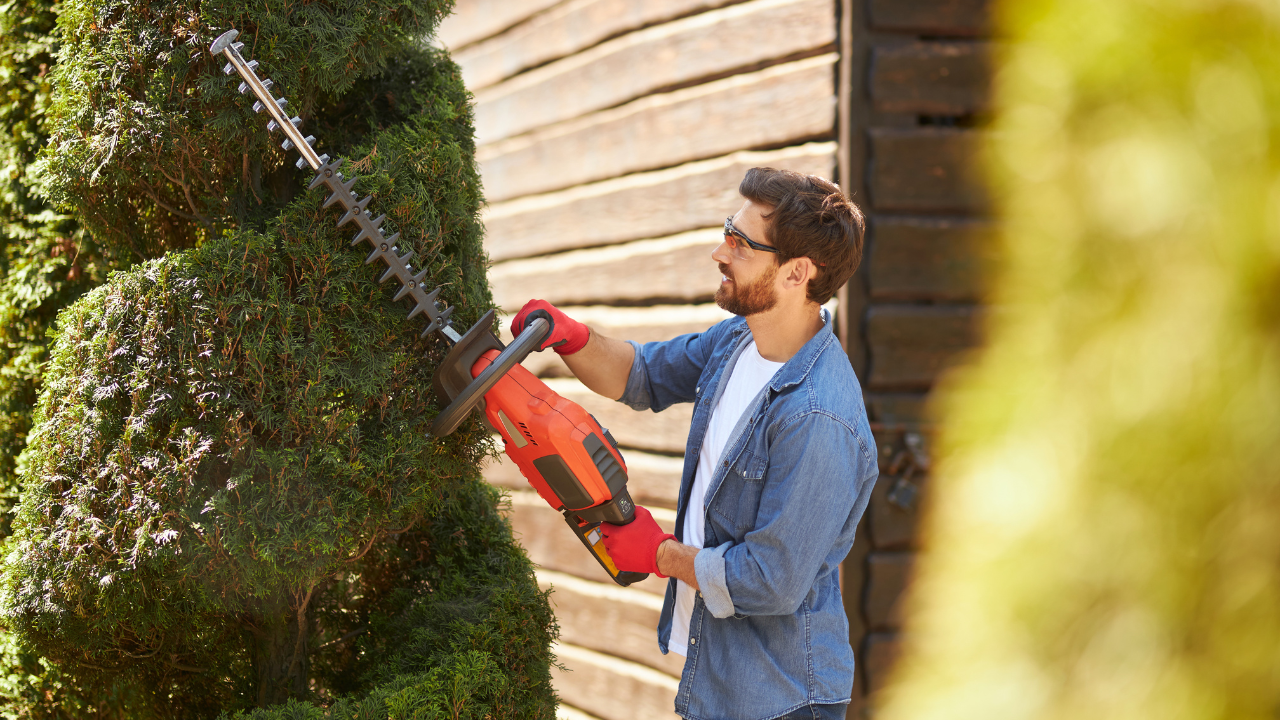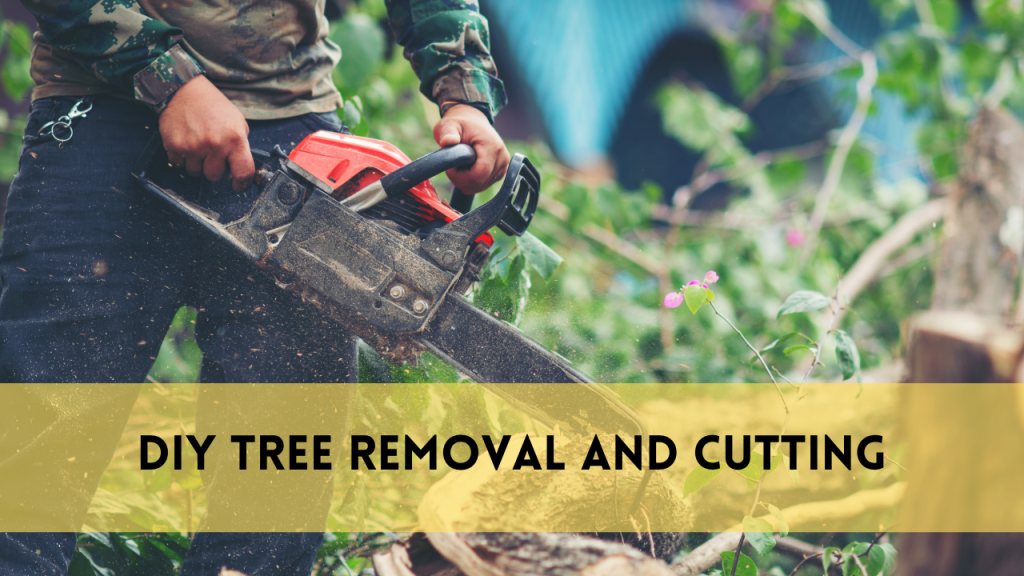The Best Advice on DIY Tree Removal and Cutting. For homeowners considering this undertaking, finding experienced assistance is critical to achieving a successful and safe end. In this detailed tutorial, we will delve into the useful insights on DIY tree removal and cutting supplied by Kingwood Arborist, a reputable arboriculture expert.
From analyzing tree health to selecting the correct tools, prioritizing safety, and navigating the DIY cutting process, Kingwood Arborist provides expert advice to homeowners wanting to take on tree removal themselves. Join us as we go over the critical stages and considerations for a successful DIY tree removal and cutting experience.
Benefits of DIY Tree Removal and Cutting
Do-it-yourself (DIY) tree removal and trimming initiatives provide numerous benefits for homeowners. Here are the primary benefits:
Cost Savings: Hiring a professional arborist can be costly. DIY tree removing and cutting projects allow homeowners to save money by providing their own labour and tools.
Flexibility and Convenience: DIY tree removal and cutting allows homeowners to schedule it when it is most convenient for them, avoiding any delays from professional services.
Skill Development: Working on tree removal tasks allows you to gain new skills. Learning how to operate chainsaws, pruning tools, and other equipment increases one’s competency.
Connection with Nature: Active participation in tree removal develops a stronger connection with the environment. It teaches homeowners about tree anatomy and their significance in the environment.
Customization: DIY tree removal and cutting projects allow homeowners to control the cutting process, ensuring that trees are removed or pruned according to their preferences.
While DIY tree removal and cutting can be satisfying, it is critical to emphasize safety and seek expert help for complex or dangerous circumstances.
The Best Advice on DIY Tree Removal and Cutting
Assessing Tree Health
Determining a tree’s health is an important first step in any DIY tree removal and cutting project. Kingwood Arborist highlights the importance of doing a thorough tree health evaluation so that homeowners may make informed decisions. Look for disease symptoms, such as discoloured or withering foliage, pest infestations, or fungal growth.
Consider the tree’s structural integrity, looking for any bending, cracks, or hollow places. Kingwood Arborist recommends using online resources or contacting local arborists for help detecting specific tree diseases seen in the Kingwood area.
By comprehensively evaluating tree health, homeowners may make informed decisions about the need for removal and the level of difficulty involved, laying the groundwork for a safe and successful DIY tree removal trip.
Choosing the Right Tools for DIY Tree Removal and Cutting
- Chainsaw
- Pruning Shears
- Loppers
- Handsaw
- Axe
- Safety Gear (Helmet, Gloves, Safety Glasses, Hearing Protection)
- Wedges
- Wood Chipper
- Rope
- Harness
Safety First: Tips from Kingwood Arborist
When it comes to tree removal and cutting, safety should be the number one priority. Kingwood Arborist highlights the necessity of adhering to safety protocols to ensure a risk-free approach. Always use proper safety gear, such as a helmet, gloves, safety glasses, and hearing protection.
Set up a distinct work zone to prioritize your own and others’ safety. Inspect tools and equipment before use, and never underestimate the importance of thorough training. Kingwood Arborist’s commitment to safety demonstrates their professionalism and desire to providing a safe tree removal service.
Remember that a cautious approach assures not only a successful tree removal, but also the safety of all parties involved.

The DIY Cutting Process
Starting a DIY tree removal and cutting job involves meticulous preparation and execution. Follow these measures to ensure a successful and safe cutting operation.
Begin by examining the tree’s size, shape, and surroundings. Determine any potential impediments or hazards. Collect the tools required for the job. These may include a chainsaw, safety equipment, a ladder, and pruning shears.
Wear protective gear such as a helmet, gloves, safety glasses, and strong boots to ensure your safety. Secure the work space to avoid mishaps. Remove any impediments or things near the tree that may interfere with the cutting procedure.
When you’re ready to cut down the tree, think carefully about which way to go. Make a horizontal cut first, followed by an angled cut to guide the tree’s descent. When the tree has been cut down, remove any debris as soon as possible. Consider recycling or repurposing wood as an eco-friendly option.
By methodically following these procedures, you can successfully traverse the DIY tree removal and cutting process while focusing on safety and efficiency.
Environmental Considerations
Tree removal and cutting projects come with environmental responsibility. Here are crucial considerations for minimizing environmental impact:
Tree Species Awareness: Learn about the unique traits and ecological significance of the tree species concerned. Certain trees serve critical functions in local ecosystems.
Permit Checking: Before beginning any cutting, verify local regulations and secure any required permits. Some trees may be protected, and improper removal can result in legal action.
Animal Habitat Protection: Inspect the tree for indicators of animal habitat. To safeguard the native fauna, avoid cutting during nesting season.
Eco-Friendly Disposal: Remove tree debris responsibly. Consider recycling wood, using branches as mulch, or repurposing wood for different projects.
Replanting Initiatives: If a tree must be removed, consider planting new trees to maintain ecological balance and help with reforestation efforts.
Individuals can help to preserve the environment and promote sustainable practices by incorporating these concerns into tree removal projects.
FAQs
Is it legal to do DIY tree removal in all areas?
Legal requirements for DIY tree removal vary by location. Before beginning any tree removal project, make sure to check with local authorities or secure the appropriate licenses.
What tools are needed for DIY tree removal and cutting?
Chainsaws, pruning shears, safety equipment (helmet, gloves, goggles), and a robust ladder are all essential items. The specific instruments required vary depending on the size and type of tree.
Can you handle DIY tree removal for all tree sizes?
DIY tree removal is appropriate for small to medium-sized trees. Large or hazardous trees may necessitate professional assistance for safety reasons.
How can I assure safety when doing a DIY tree removal project?
Put safety first by donning protective gear, carefully planning the removal process, and having someone present as a spotter. If you’re doubtful, speak with a professional arborist.
Are there any environmental concerns with DIY tree removal?
Yes, consider the environmental impact. Dispose of tree waste responsibly, and if the tree is huge or near utility lines, seek professional advice to avoid environmental damage.
Conclusion
Finally, completing a DIY tree removal and cutting endeavour takes careful study, preparation, and adherence to safety requirements. While small to medium-sized trees can be managed with the proper tools and safeguards, larger or hazardous trees require professional assistance. Legal and environmental considerations are critical, emphasizing the importance of getting permits and disposing of trash correctly.
Choosing the right equipment, maintaining safety, and comprehending the environmental impact are all critical components of a successful DIY tree removal and cutting. However, when in doubt or confronted with a difficult scenario, it is best to call a professional arborist to ensure a smooth and safe procedure. Balancing the benefits of cost-effectiveness with potential dangers is critical for a positive and responsible DIY tree.
How useful was this post?
Click on a star to rate it!
Average rating 0 / 5. Vote count: 0
No votes so far! Be the first to rate this post.




